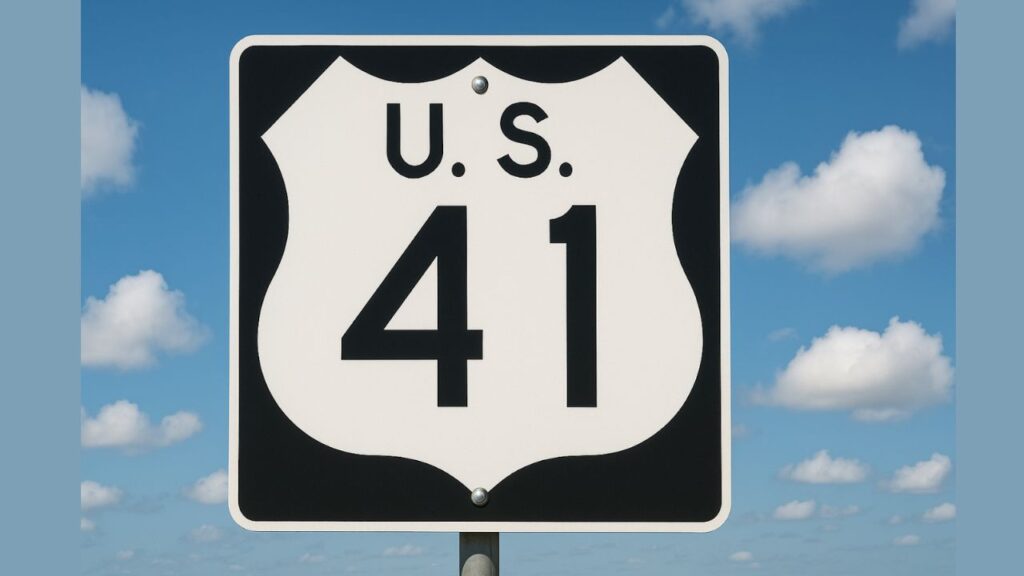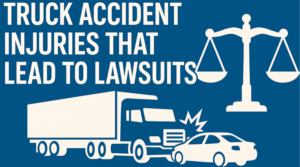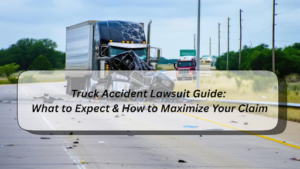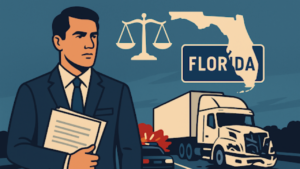Despite Florida’s stunning beaches, exciting cities, and sunshine, did you know that the state’s highways have been a point of concern for many?
Why?
Because of some fatal crashes that happen on these deadliest highway in Florida.
According to reports from the Florida Highway Safety and Motor Vehicles (FLHSMV), the state experienced a total of 395,175 crashes, resulting in 3,375 fatalities and 15,399 serious injuries.
So, what makes these roads so deadly?
Is it the high-speed interstates, urban congestion, or just plain reckless driving?
Here we’ll discuss the 7 most dangerous highways and roads in Florida or most dangerous interstate in Florida, backed by some stats, real risks, and some helpful insights to keep you alert and safe behind the wheel.
Interstate 4 (I-4)
Route: Tampa → Orlando → Daytona Beach
Fatalities: Over 165 deaths since 2020
Known for: Dense tourism traffic, sudden congestion, aggressive driving
I-4 is often called the “Deadliest Highway in America”.
Tip: What is the deadliest highway in Florida?
Interstate 4 (I-4) is considered the deadliest highway in Florida.

Why it’s dangerous
- I-4 cuts through central Florida, which connects the major tourist spots like Disney World and Universal Studios.
- The state faces unpredictable driving behaviors because of locals, tourists, and out-of-state drivers.
- Constant switch of lanes, stop-and-go traffic, and impatient drivers increase the risk of crashes.
Quick Note: What is the Most Dangerous Road in Florida?
Interstate 4 (I-4) is the most dangerous road in Florida.
U.S. Route 1 (US-1)
| Route: Key West → Miami → Jacksonville Fatalities: 394 deaths since 2020 Known for: Urban traffic, high pedestrian activity, and low night visibility |

Why it’s dangerous
- US-1 runs through the busy cities, including Miami. This makes it one of the busiest and most accident-prone roads in Florida.
- It has lots of intersections, traffic lights, and pedestrian crossings. Because of this, it raises the risk of rear-end crashes and jaywalking accidents.
- At night, poor street lighting in some areas makes it harder to see pedestrians or bikes, especially in older parts of town.
| 🔺Tip: Drive more slowly in city zones, watch for crosswalks, and use high beams only when necessary to spot hazards early. |
Interstate 95 (I-95)
| Route: Miami → Jacksonville Fatalities: 284 in 2019 (Florida Segment) Known for: High-speed traffic, road rage, lane-weaving, peak congestion in Miami-Dade & Broward |

One of the busiest and deadliest highways in the U.S., I-19 in Florida, is infamous for aggressive drivers and rapid lane changes. The ”Fort Lauderdale Mile” on the I-95 is considered the deadliest one-mile stretch in the county.
Why it’s dangerous
- Rush Hour Risks: The morning and evening peak hours are marked by frequent fender-benders and multi-car crashes.
- Weather Hazards: Sudden rain showers create slick roads and poor visibility.
U.S. Route 41 (US-41)
| Route: Naples → Tampa → Gainesville Fatalities: 519 deaths between 2018 and 2022 Known for: Rural-to-urban transitions, wildlife crossings, and heavy truck traffic |

Why it’s dangerous
- US-41 stretches across Florida’s Gulf Coast. This route transitions from rural areas to bustling urban centers.
- Drivers often underestimate the road’s challenges, which include sharp turns, limited lights, and sudden changes in traffic flow.
- The presence of wildlife crossings and heavy truck traffic further increases the risk of accidents.
Interstate 75 (I-75)
| Route: Miami →Tampa →Georgia Fatalities: 180+ since 2020 Known for: Fog-prone stretches, wildlife, and long gaps between exits |

Why it’s dangerous
- “Alligator Alley” is a nickname for the stretch of I-75 through the Everglades, where fog is common, particularly during early mornings and evenings, reducing visibility.
- The highway transitions quickly from open freeway to dense traffic, especially around urban areas like Tampa and Naples.
- Wildlife crossings, especially in rural areas, can pose unexpected hazards, with animals such as alligators and deer frequently found near roads.
Interstate 10 (I-10)
Route: Jacksonville → Pensacola
Fatalities: 120+ since 2020
Known for: Long, monotonous drives, fatigue-related crashes, limited services

Why it’s dangerous
- I-10 runs through the Florida Panhandle, which offers long, monotonous stretches that can lead to driver fatigue, one of the most significant causes of accidents on this route.
- The highway is often less crowded, but the lack of frequent exits or services means drivers can go for long periods without rest, increasing the risk of distracted driving or fatigue-related crashes.
- The limited services and gas stations along the route make it challenging for drivers to stay alert, especially on long trips. This contributes to more accidents.
U.S. Route 19 (US-19)
| Route: Clearwater → Holiday → Chiefland Fatalities: 94 (Pinellas County only) Known for: Urban congestion, pedestrian deaths, frequent turning lanes |

Why it’s dangerous
- US-19 runs through heavily urbanized areas packed with shopping centers, restaurants, and residential neighborhoods.
- It’s notorious for frequent intersections and turning lanes, which create unpredictable traffic patterns and increase the risk of crashes.
- Pedestrian accidents are common, especially in Pinellas County, where the highway has one of the highest pedestrian death rates in the country.
- The combination of high traffic volumes and frequent stops and starts makes it easy for collisions to occur, even at lower speeds.
How to Stay Safe on Worst Highway in Florida
Driving on Florida’s highways comes with risks, but a few careful steps can make your journey much easier. Here’s what you should keep in mind:
✅Avoid Peak Hours: Highways like I-4, I-95, and US-1 experience heavy congestion during morning and evening rush hours. Traveling during off-peak times can significantly reduce your chances of being involved in an accident.
✅Check Weather Conditions Before Starting Your Trip: Fog and sudden rainstorms, especially along I-75, can cause poor visibility and slippery roads. Always be prepared and adjust your driving speed accordingly.
✅Take Regular Breaks on Long Drives: Routes like I-10 and US-41 have long, open stretches that can quickly cause driver fatigue. To stay alert, it’s recommended to stop and rest every two hours.
✅Watch for Pedestrians and Cyclists: Urban highways, such as US-1 and US-19, experience a high volume of foot traffic. Be extra cautious at intersections and near shopping centers.
✅Follow the Speed Limit: Speeding continues to be the leading cause of fatal crashes on Florida’s highways. Maintaining a safe speed helps you react more quickly to unexpected situations.
Need Help After an Accident?
You don’t have to face it alone. If you or your loved one has been involved in a truck accident, contact Berke Law Firm today for a free consultation.
✅No upfront fees – you pay only if we win!
✅Proven experience in fighting for accident victims.
✅Personalized attention every step of the way.
Call us now at (800) 572-3753 or send us a message. Our team is ready to defend your rights.
Sources –
Federal Motor Carrier Safety Administration (FMCSA)
The FMCSA outlines strict rules and safety guidelines for commercial trucks. They cover areas such as driving hours, driver requirements, and vehicle maintenance.
National Highway Traffic Safety Administration
The National Highway Traffic Safety Administration (NHTSA) provides detailed statistics, research, and resources on truck accidents and highway safety, highlighting key trends and causes.
Florida Highway Safety and Motor Vehicles (FLHSMV)
The FLHSMV oversees driver’s licensing, vehicle registration, and highway safety enforcement to ensure secure and efficient transportation across Florida.
FAQs for Most Dangerous Highways in Florida
What is the most dangerous highway in Florida?
Interstate 4 (I-4), is topping the chart for most dangerous highway in Florida.
What should I do if I’m involved in a truck accident?
Stay safe, call 911, get medical help, gather evidence, and contact a truck accident lawyer to protect your rights.
How is fault determined in a truck accident?
Fault is based on evidence such as police reports, witness statements, truck logs, and accident reconstruction, often with the assistance of legal experts and investigators.
What compensation can I receive after a truck accident?
Depending on the details of the case, you may receive compensation for medical bills, lost wages, pain and suffering, property damage, and future treatment costs.
How long do I have to file a claim in Florida?
In Florida, you generally have two years from the accident date to file a personal injury claim, under the latest statute of limitations.
Do I need a lawyer for a truck accident claim?
Yes, a lawyer can help you deal with insurance, prove fault, calculate damages, and fight for the maximum compensation you deserve after a truck accident.






